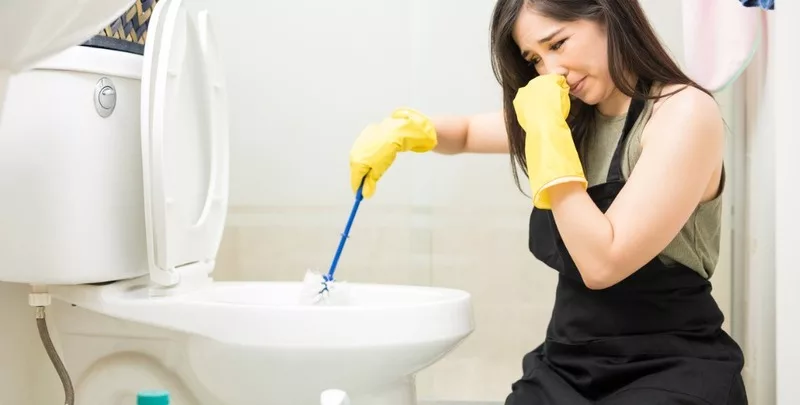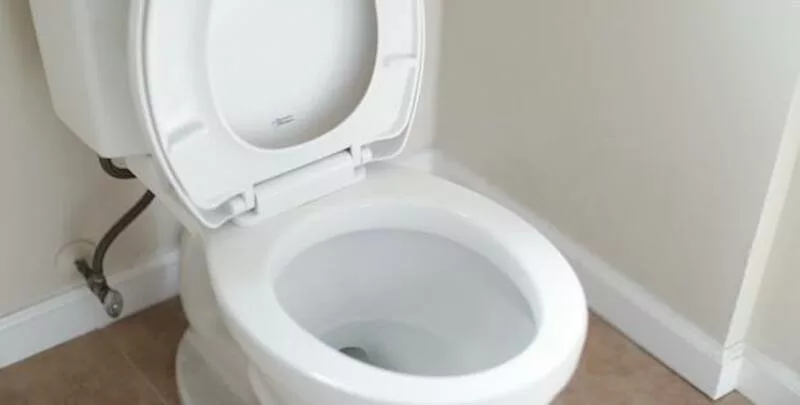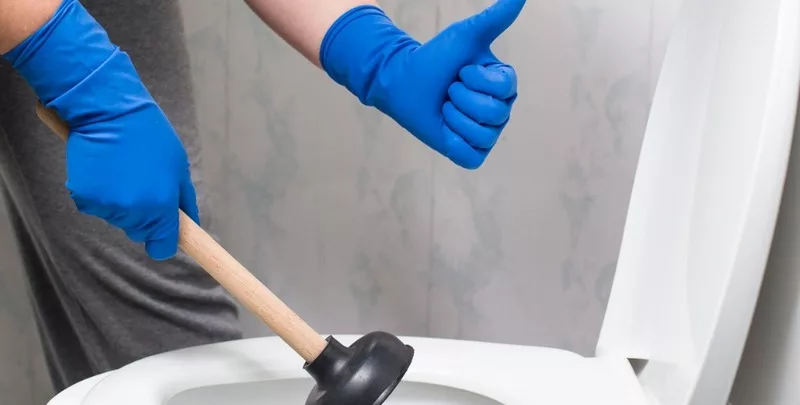
Common Toilet Problems You Can Fix Yourself
If there’s one plumbing problem that anyone dreads above all others, it’s arguably a blocked toilet.
That feeling of panic as you get up off the toilet seat, press the flush button and watch the water level rise to the top of the bowl is something many of us have experienced one time or another.
Sometimes it can be a relatively quick fix with the aid of a simple toilet plunger. Other times, however, it might be indicative of a larger plumbing system problem that needs the expertise of a plumber.
From unclogging blocked toilet drains to resolving issues with a constantly running or leaking toilet, and everything in between, here are some of the most common toilet problems that you can fix with minimal hassle and expense.
But First … How Does a Toilet Cistern Work?
Before we discuss common toilet problems you can fix, for added context, let’s talk about how a toilet actually works.
The two main components that you’ll likely encounter problems with are the cistern and the toilet bowl. The cistern is the part that most commonly causes problems, due to the numerous moving parts and mechanisms it contains.
Get To Know The Various Cistern Parts
Take off the tank lid and you’ll find the entire toilet cistern component range. Those components include the:
- Lever – which activates when you press the toilet flush button (or in some cases pull the flush handle).
- Toilet flapper – which works in conjunction with the flush valve to release water from the cistern into the bowl.
- Chain – which connects the lever to the flapper, and lifts the flapper to enable the water to move from cistern to bowl.
- Flush valve – which releases the water from the cistern to the bowl and closes off when the cistern empties.
- Fill valve – which enables the cistern to fill with fresh water when the toilet flushes and the cistern is emptied.
- Float ball or float cup – which floats at the top of the water in the cistern and regulates the water level in your cistern.
- Refill tube – which fills your cistern with fresh water.
- Overflow tube – which stops the cistern from filling up too high and spilling over.
Not located in the toilet tank, but crucial to its functionality, is the water supply valve. Also known as the shut-off valve or stop valve, it is typically located at the base near the toilet bowl and regulates the flow of water from the mains to the cistern.
If you find yourself dealing with toilet leaks, a constantly running toilet or any toilet problems that require maintenance and repair, you’ll want to be able to locate the water supply valve quick smart.
With this added context in mind, let’s now look at the most common toilet problems you’ll likely encounter.

What You Can’t Do
First, it’s worth noting that it is against the law in all states and territories of Australia to complete plumbing work if you do not have the right licence and qualifications. Each state and territory in Australia has slightly different laws and regulations around the matter.
To use the South Australian Government as an example, by law a licensed plumber must undertake any work from the water main and sewer main connection points at the borders of your property up to and including your home’s pipework. This essentially means that an unlicensed person cannot do:
- Toilet installation
- Bathroom plumbing renovations
- Additions or changes to any plumbing pipework
While plumbing work will be out of the scope of many people who encounter problems with their toilet, there are still some simple fixes that you can do to get your loo back in working order.
Unblocking a Clogged Toilet
Let’s start with one of the most common toilet problems, and often one of the easiest to rectify.
Clogged toilets can occur for several reasons. Everything from using too much toilet paper, to flushing anything that doesn’t fall into the three P’s category (the three P’s being poo, pee and [toilet] paper).
If you find yourself with a blocked toilet, a plunger is often your best plan of attack. Make sure, though, that you have a specific toilet plunger instead of a sink plunger.
They look the same for the most part. However, a toilet plunger has an additional rubber flap called a flange. You’ll find the flange in the suction cup part; it folds out when inserted into the drain of the toilet.
Once you’ve inserted the plunger and gotten a decent seal with the flange, push up and down on the plunger handle to dislodge the blockage. All going well, you should be able to fix the problem.
If the blockage is a little too stubborn for a plunger to conquer, you may need to hire a drain snake. Follow the instructions on how to use the drain snake to loosen the blockage and, hopefully, you’ll resolve your issue with ease.

Toilet Bowl Will Not Flush
On the list of inconvenient toilet problems, second to the prospect of dealing with a blocked toilet is finding the toilet won’t flush at all. This is typically a sign of a problem with one of the components in the cistern, such as the chain or flush valve.
It might either be broken or not installed tightly enough. If any of the essential parts of the cistern are loose, try tightening them up. You may need to replace them if they’re broken beyond repair. Should the internal parts of the cistern look to be in working order, check the toilet flush button or handle. If it is too loose or too tight, that may also create problems with flushing the toilet.
Cistern Does Not Release Enough Water When Flushed
As a separate issue to your toilet not flushing at all, if you press the flush button and the cistern does not release enough water into the bowl, it may be indicative of a problem with the flush valve. Check to see if it may not have been correctly installed or has become damaged.
Alternatively, the issue may be a lack of water in the cistern. This can often be down to a problem with the water supply to your home. You may need to fill the tank manually while you wait for a licensed plumber to determine if there is any larger issue related to your water supply.
Toilet Tank Doesn’t Stop Running
If you find your toilet runs constantly, your flush valve may again be the issue here. Check to see if it is sealing correctly. If there are no problems there, check to see if the fill valve may be leaking.
That might be resolved by simply adjusting the float arm of your fill valve.
The Wiggly Toilet Seat Problem
A loose toilet seat is a frequent and often irritating issue in many households. This problem, usually identified by a wiggly toilet seat, can cause discomfort and instability. Fortunately, it’s a common problem that you can fix yourself with simple tools.
The process to repair a loose toilet seat involves tightening the bolts that secure the seat to the toilet bowl. Sometimes, if the seat is too worn, you might need to replace it entirely. To fix a wiggly seat, first identify the type of seat and the fastening mechanism it uses.
Then, either tighten the existing bolts or install a new seat. Regular checks and maintenance can prevent the seat from becoming loose again, ensuring a stable and comfortable experience in your bathroom.
If In Doubt, Call a Plumber
Luckily you can fix some of these common problems, like the blocked toilet. However, if you’re ever in doubt or just not confident in your DIY abilities, your safest approach to toilet repairs is to call a licensed plumber. Failed do-it-yourself attempts can often cause further problems that end up costing you more to repair.
More importantly, you don’t want to risk injury to yourself or others, especially when it comes to water. A licensed plumber will have the necessary experience and tools to resolve the problem with minimal fuss. That way, your toilet can return to the excellent working condition you need!
Please note: This information is provided for advice purposes only. Regulations differ from state to state, so please consult your local authorities or an industry professional before proceeding with any work. See our Terms & Conditions here.
Published: 2023-01-11

















